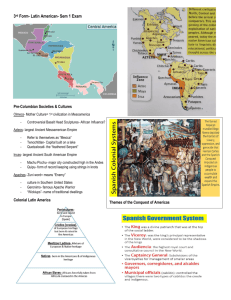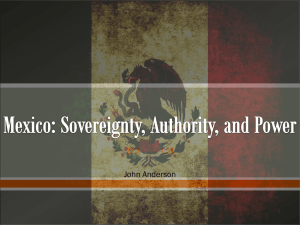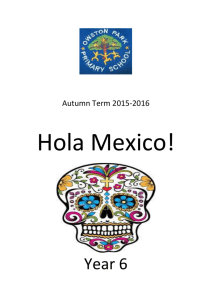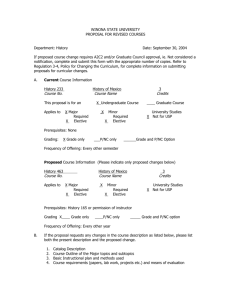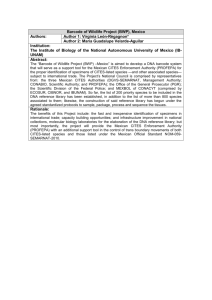Comparative Government & Politics Guided Reading: Chapter Five
advertisement
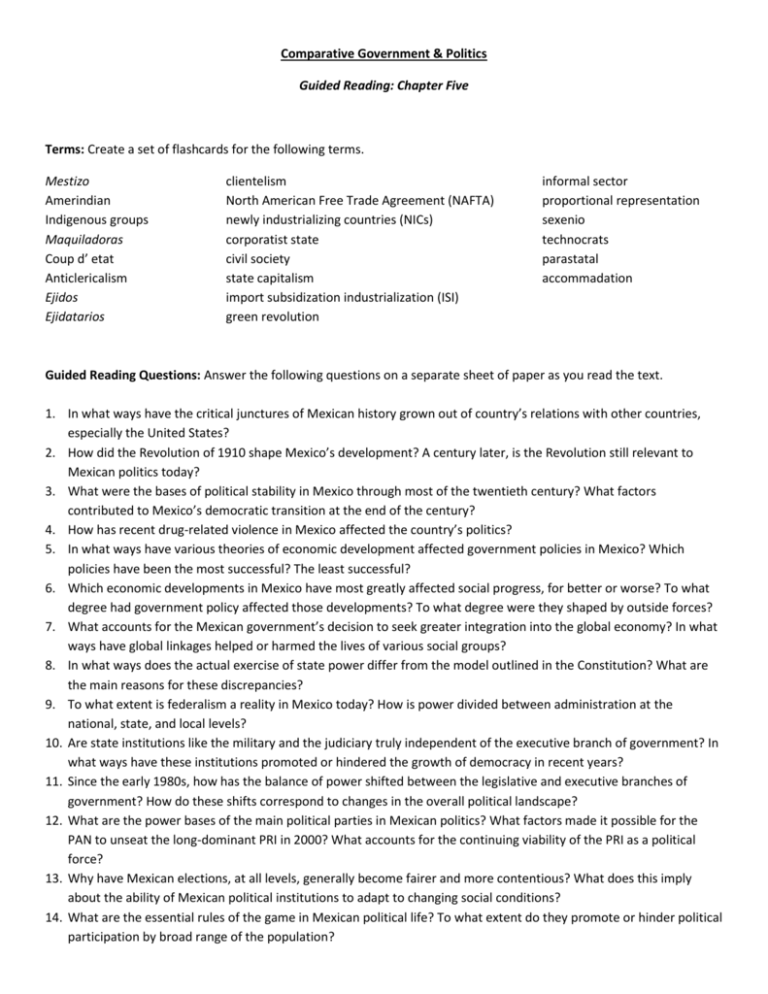
Comparative Government & Politics Guided Reading: Chapter Five Terms: Create a set of flashcards for the following terms. Mestizo Amerindian Indigenous groups Maquiladoras Coup d’ etat Anticlericalism Ejidos Ejidatarios clientelism North American Free Trade Agreement (NAFTA) newly industrializing countries (NICs) corporatist state civil society state capitalism import subsidization industrialization (ISI) green revolution informal sector proportional representation sexenio technocrats parastatal accommadation Guided Reading Questions: Answer the following questions on a separate sheet of paper as you read the text. 1. In what ways have the critical junctures of Mexican history grown out of country’s relations with other countries, especially the United States? 2. How did the Revolution of 1910 shape Mexico’s development? A century later, is the Revolution still relevant to Mexican politics today? 3. What were the bases of political stability in Mexico through most of the twentieth century? What factors contributed to Mexico’s democratic transition at the end of the century? 4. How has recent drug-related violence in Mexico affected the country’s politics? 5. In what ways have various theories of economic development affected government policies in Mexico? Which policies have been the most successful? The least successful? 6. Which economic developments in Mexico have most greatly affected social progress, for better or worse? To what degree had government policy affected those developments? To what degree were they shaped by outside forces? 7. What accounts for the Mexican government’s decision to seek greater integration into the global economy? In what ways have global linkages helped or harmed the lives of various social groups? 8. In what ways does the actual exercise of state power differ from the model outlined in the Constitution? What are the main reasons for these discrepancies? 9. To what extent is federalism a reality in Mexico today? How is power divided between administration at the national, state, and local levels? 10. Are state institutions like the military and the judiciary truly independent of the executive branch of government? In what ways have these institutions promoted or hindered the growth of democracy in recent years? 11. Since the early 1980s, how has the balance of power shifted between the legislative and executive branches of government? How do these shifts correspond to changes in the overall political landscape? 12. What are the power bases of the main political parties in Mexican politics? What factors made it possible for the PAN to unseat the long-dominant PRI in 2000? What accounts for the continuing viability of the PRI as a political force? 13. Why have Mexican elections, at all levels, generally become fairer and more contentious? What does this imply about the ability of Mexican political institutions to adapt to changing social conditions? 14. What are the essential rules of the game in Mexican political life? To what extent do they promote or hinder political participation by broad range of the population? 15. Why has the notion of accommodation played an important role in Mexican political life? In what ways has it hindered or promoted the development of stable political institutions? 16. In what ways is economic integration with the rest of the world affecting political and social changes in Mexico? Which groups of people is it hurting most? Helping most? 17. What challenges does the process of globalization pose to the Mexican’s strong sense of national identity? 18. How successful has Mexico been in confronting the legacy of authoritarian rule? To what extent have recent administrations been able to make the government more accountable and transparent? 19. Does Mexico offer lessons for other countries moving from authoritarian forms of governance to more democratic ones? What features of the Mexican experience might other countries usually follow? What features are so peculiar to Mexico that they offer little guidance to the rest of the world?


